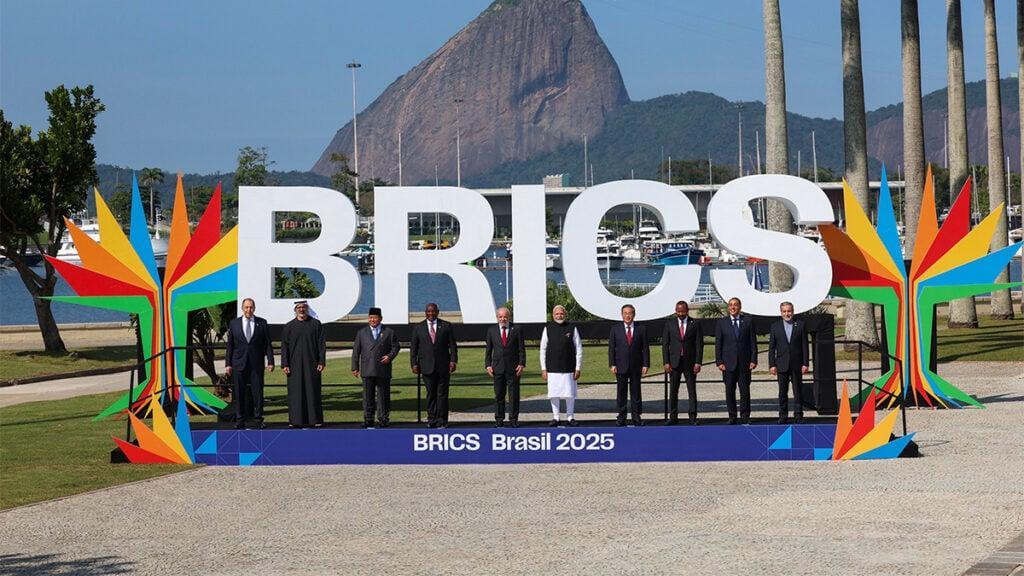Africa-Press – South-Africa. The South African Revenue Service’s (SARS’s) 2024 data showed that South Africa has a trade surplus of R37 billion with the United States and a trade deficit of R253 billion with BRICS countries.
This data became particularly relevant after United States President Donald Trump announced a 30% tariff on South African products exported into the United States.
On 7 July 2025, Trump announced that South Africa would be hit with the tariff from 1 August 2025, based on the imbalanced trade between the two countries.
He said the two countries had years to discuss their trading relationship and that the United States must now move away from long-term and very persistent trade deficits.
He said these deficits are primarily a result of South Africa’s tariff and non-tariff policies, as well as its trade barriers. “Our relationship has been, unfortunately, far from reciprocal,” he said.
Shortly afterwards, the American President warned that the BRICS nations pushing anti-American policies will be charged an additional 10% tariff.
BRICS nations have called for the de-dollarisation of international trade and for an alternative to the SWIFT network system to evade United States oversight and sanctioning power.
South African President Cyril Ramaphosa responded to the United States’ tariffs by challenging the interpretation of trade imbalances between the countries.
“South Africa maintains that the 30% reciprocal tariff is not an accurate representation of available trade data,” he said.
“In our interpretation of the available trade data, the average tariff on imported goods entering South Africa stands at 7.6%.”
Ramaphosa said the “contested interpretation” forms part of the issues under consideration by the negotiating teams from South Africa and the United States.
“South Africa will continue with its diplomatic efforts towards a more balanced and mutually beneficial trade relationship with the United States,” he said.
“We welcome the commitment by the US government that the 30% tariff is subject to modification after our negotiations with the United States.”
He also criticised Trump’s warning towards BRICS nations, saying the grouping is a very positive collective manifestation.
He said it was disappointing that “there should be others who see it in a negative light and want to punish those who participate”.
South Africa’s trade with the United States
South Africa has been able to run consistent trade surpluses with the United States due to favourable trading conditions.
This means that trade with the United States brings more money into South Africa, as we export more goods to the United States than we import from them.
South Africa is given preferential access to the United States under the African Growth and Opportunity Act (AGOA) project.
AGOA is not a trade agreement but rather an incentive given to South Africa for protecting the interests of the United States.
Through this program, South Africa is given duty-free access to the United States market on approximately 6,800 products.
This makes it much cheaper for the United States, as the largest economy and consumer in the world, to buy goods from South Africans.
Being granted duty-free access to the United States economy benefits South African businesses tremendously as it broadens their market.
If a 30% tariff is implemented on 1 August 2025, potentially with another 10% due to South Africa’s affiliation with BRICS, it will significantly hurt South Africa’s economy.
Efficient Group Chief Economist Dawie Roodt said it is not only about the impact of direct tariffs on South Africa, but also about the effect they will have on investor confidence.
Roodt explained that the economic impact of these tariffs will not be that severe in terms of absolute figures, but relative to the country’s growth, it will be devastating.
“The impact will not be that great. That is the short answer, but there is a lot more to it because the South African economy is hardly growing,” Roodt said.
“Even a small headwind like this will add to the many problems the country already faces. This is just another nail in the coffin of the South African economy.”
South Africa’s trade with BRICS nations
BRICS is an intergovernmental organisation comprising ten countries – Brazil, Russia, India, China, South Africa, Egypt, Ethiopia, Indonesia, Iran and the UAE.
Although South Africa is part of the BRICS nations, there are no formal trade agreements between the BRICS partners.
BRICS nations still have to engage in bilateral trade negotiations, like any other country, before any trade agreements are made.
The grouping does not provide South Africa with any direct beneficial trade advantages, no tariff reductions, quotas or preferential trade access.
The BRICS partnership, at face value, does not directly aid or support South Africa on a trade basis at all.
Despite South Africa’s affiliation with BRICS, it runs trade deficits with every major BRICS nation – Brazil, Russia, India, and China.
Looking at the new additions, South Africa only runs a trade surplus with two of these countries – Iran and Ethiopia.
The graphs below show the trade balance with each of the BRICS members.
United States versus BRICS
The graph below shows South Africa’s trade balance with all the BRICS nations combined relative to South Africa’s trade balance with the United States.
According to SARS’ trade data, in 2024, South Africa had a R37 billion trade surplus with the United States and a combined R253 billion trade deficit with all its BRICS partners.
This highlights the significance of the United States and AGOA benefits to South Africa, underscoring the importance of fostering good relations with the US and President Trump.
For More News And Analysis About South-Africa Follow Africa-Press






